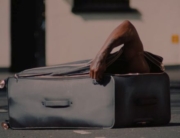
Robert the Bruce is curious to say the least, a sequel of sorts to Mel Gibson’s wildly successful, albeit historically inaccurate, 1995 epic Braveheart. A spiritual intermission is probably more accurate, as the only connection between these films is Angus Macfadyen reprising his role as the titular 14th-century Scottish king, in addition to serving as producer and co-writer. A passion project for sure, but clearly limited in budget compared to Gibson’s film or even Netflix’s version of the monarch, Outlaw King. Frustratingly, the film’s attempt to convey the ruler’s inner turmoil feels stilted by how long it takes to reach its most compelling moments.
It starts with the retelling of Robert’s (Macfadyen) faithful encounter with, and stabbing of, his main political rival, John Comyn (Chernobyl’s Jared Harris), for the leadership of an independent Scotland. This intro, narrated as a bedtime story by a woman named Morag (Anna Hutchinson), takes place a year after the execution of Scottish independence fighter William Wallace and semi-glamorizes the rise of Robert as leader of the Celtic uprising. It’s also a stark contrast to the literal cold truth he faces in the present-day winter. Having suffered one military defeat after another, the Scottish king is left with few men and even less morale. After ordering his remaining followers to leave, he’s hunted by more traitorous folk among his ranks, as well as those loyal to England, who seek the bounty Edward I has placed on Robert’s head.
Wounded and conflicted over the fate of his mission, Robert is rescued by Morag and nursed back to health. Living with her son Scott (Gabriel Bateman), niece Iver (Talitha Bateman), and teenage nephew Carney (Brandon Lesser), they more or less symbolize the purity of the masses that Robert hopes his rebellion would inspire. The only caveat: their clan is aligned with Edward, and Carney’s uncle Brandubh (The 100’s Zach McGowan) is on Robert’s tail to collect the reward money.
Unfortunately for a movie titled Robert the Bruce, much of the first half seems disinterested in doing much with him. Yes, he’s chased, wounded, and discussed ad nauseam by the supporting cast, but rarely does the film show Robert’s desires beyond his most notable historical motivation. Even with Macfadyen’s world-weary performance, he feels more symbol than character, an embodiment of the hope for a liberated Scotland. It doesn’t help that, with all the sprawling interactions in the first hour, Robert’s most riveting moment occurs in his famous cave meeting with a spider spinning its web. Honestly, it makes everything prior to this encounter feel like an overlong prologue.
The lack of action is sort of balanced out by how gorgeous Robert’s setting looks. Shot in Scotland and Montana, Richard Gray’s direction and John Garrett’s cinematography make it difficult to tell any difference between the locations. Sweeping mountain vistas and perpetual snow coat everything in an endless winter, and light, occasionally shimmering through the trees, creates an otherworldly vibe. As amazing as these shots are, they’re not enough to justify pushing the film’s big inciting incident—Robert being taken in by the family—to its midway point.
The last hour is marginally better, thanks to Robert’s charming dynamic with Morag’s family. Again, not an excuse for how long it took to reach this point, but there is a payoff. Robert noticeably feels guilt for all the men who’ve sacrificed themselves for his cause—Morag’s husband included—and Scott’s resentment of those losses forces him to grapple with the cause’s worth. So Robert must gain their trust and regain trust in himself. It’s the kind of poetic tragedy that could easily have been made for theater.
In other words, Robert the Bruce tries to depict big ideas through intimate settings and conflicts. Even the smaller-scale action scenes feel more akin to samurai clashes or gunslinger duels than Braveheart’s Battle of Stirling Bridge. Does it all work? Some, but not all, mostly due to the slowness of the first act. The script needed to establish Robert’s ambition more without sacrificing the introduction of other characters.
If you’re a Braveheart fan, Robert the Bruce might be a bit tonally jarring compared to the bloodshed and bombast of Gibson’s film. It definitely doesn’t feel like a Hollywood movie, but for a supposedly long-awaited follow-up, it better resembles a Netflix episode near the end of its season-long arc, usually when the protagonist is at his lowest point. The problem is that, with those series, you know enough about the character to empathize with his struggle, and a part of that is missing here, even if passion reveals itself every so often.
















Awful … just awful !